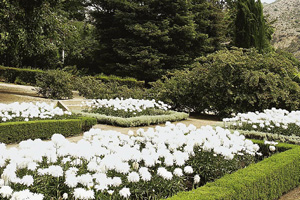The irreparable damage that man has caused to nature is clear. The fragile balance of all ecosystems is continually put to the test by repeated human actions that damage individuals or the resources they need to survive.
For this reason, and thanks to a general consensus that it’s everyone’s job to preserve the species with which we share the planet, various initiatives have been undertaken recently to ensure that future generations can get to know and enjoy the existence of biodiversity, both animal and vegetable. This is why in many countries, numerous wooded and jungle areas are being preserved by government or private entities, to conserve the greatest possible quantity of animal and plant species by in situ conservation or in their natural environments.
Conservation initiatives for the preservation of species have also been implemented and strengthened ex situ, apart from the plant’s natural environment, such as seed banks or botanical gardens.
Seed banks
In the first decades of the 20th century, concern began to grow with respect to the conservation of the genetic diversity of many plant species. This is because for centuries, man selected and preferred certain crops in favor of others, as they didn’t render the same nutritional and economic benefits. In this way, the creation of seed banks became necessary. Seed banks are enormous collections of seeds selected from diverse places, dried, and then stored under strict conditions (adequate temperature and environmental humidity), with the purpose of preserving a large part of species previously discarded. Today, the main objective of seed banks is to preserve endangered plants in a place apart from their natural environment.
Seeds have natural characteristics that allow their conservation over long periods, in adequate conditions and with limited damage. Preserving the dormant seeds of rare or threatened species, or of those species that form a part of man’s diet, constitutes a real genetic insurance against the risk of extinction in nature.
Dryness and cold increase the time that a seed can be stored. Some remain dormant for years, while others survive for centuries. This system also allows the conservation of a great quantity of different seeds in spaces of reduced size.
It’s worthwhile to emphasize that these banks aren’t only dedicated to the variability of certain crop species, which, while important, don’t represent the enormous quantity of existing plant organisms. There are also some banks that are dedicated to preserving wild plant seeds, which are the most difficult to preserve in natural conditions.
The Millenium Seed Bank (MSB) is considered the most important worldwide. It consists of an initiative begun by the United Kingdom, specifically by the Royal Botanical Gardens of Kew, but it unites more than 50 countries to work together for plant conservation. It proposes collecting seeds from 10% of the world’s plant species (close to 30 thousand species) by the year 2010.
In April of this year, there were already more than 18 thousand species stored. Among those that most interest scientists are wild species that are critically endangered and that are especially useful for man, with an emphasis on those that inhabit arid and semi-arid regions.
Botanical gardens
There are over 1,500 botanical gardens in the world. Generally, these correspond to large extensions where diverse plant species are classified and maintained, with various objectives such as research, conservation and tourism.
One of the most important roles that these places fulfill is to educate people about the imminent risk of extinction of many species. Also, botanical gardens can protect and conserve some plants whose seeds can’t be stored in cold temperatures (such as in seed banks). What’s more, they can help increase the number of specimens of vulnerable and threatened species, attending step-by-step the reproduction of the plants and their possible introduction into natural environments, just as occurs with animals.








